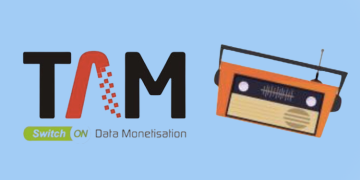Similar to the B2C environment, buying behaviors for the B2B industry have shifted amid the COVID-19 pandemic. However, unlike the buying journey we see in the B2C market, B2B companies are tasked with the additional challenge of engaging a smaller pool of consumers (i.e. business decision-makers) who spend more time in the consideration process. B2B marketers looking to help their business recover should not only retain current customers but create relationships with new accounts for growth.
Below are three key actions for marketers to win in this new B2B buying environment:
- Look to digital channels for content distribution
Before the pandemic, in-person meetings and events were a critical B2B touchpoint for generating leads and moving them across the buyer journey. That’s all changed, and without traditional interactions, B2Bs are looking to content creation to engage prospects. In the U.S. alone, 43% of B2B marketers are reallocating event budgets that were unused due to COVID toward spending on content.
Except, content is rendered useless if it’s not relevant – and that’s where B2B marketers should look to pivot to digital strategies that will effectively reach their target audience. Digital channels are not the only key in engaging with B2B audiences, but it’s also the preferred way for customer interaction, with buyers rating digital channels twice as important than before, on average. In the UK and Spain, that rating is even higher with a score that triples in importance.
In fact, ‘going digital’ to engage with prospective buyers is a pre-COVID trend that has since accelerated. B2B online sales saw a 24% increase from last year, and since the start of COVID, have rapidly increased with the number of online B2B purchases jumping from 41% to 46%. Moreover, across B2B markets worldwide, the average company revenue share, driven by e-commerce, has increased by 23% pre vs. post-outbreak.
- Messaging that is more helpful drives purchase
In our new normal, B2Bs should look to be top of mind among buyers with informative content that provides answers to their questions, shows off their expertise, and is transparent while providing ease and convenience. As B2B customers are a much smaller target group compared to B2C, companies need to optimize through proper messaging that incentivizes both sides to work together. Furthermore, as the typical B2B sales cycle takes four to six months to close new business, this prolonged consideration phase warrants content that isn’t solely focused on product or service.
This could mean a shift into blogs with advice or tips on how businesses can make working from home easier or prepare the office for a return-to-work environment, as well as articles on how your business can help them with new ways of working. How important is your digital content to the customer experience? Well, suppliers that provide an outstanding digital experience are 70% more likely to be chosen as a primary supplier compared to those that offer ‘fair’ or average experience. Moreover, Gartner’s research shows that customers who perceive the information they receive from suppliers as helpful are also three times more likely to make a bigger deal with less regret.
- Diversify your channel mix for optimized results
With your message going digital, it’s important to target buyers across a mix of digital platforms. It’s a disservice to your business if you take the approach that your entire B2B audience is simply on LinkedIn or Facebook, or that prospective buyers know exactly what they’re looking for to make their business better. In an era where buyer trust is the foundation of purchasing decisions, businesses must consider two critical factors when selecting a digital channel: meet your prospective buyers where they are online, and tap into new buyers who will consider your brand once they discover it.
Trust in the B2B relationship is paramount between buyer and seller, and quality digital channels, like native advertising on the open web, enable B2Bs to establish themselves as trusted sources of information. Native ads on leading news and industry-specific sites is a great way to promote your engaging content at scale.
While the use of digital channels among B2B companies has grown significantly in recent years, it has only been fast-tracked by the impact of COVID. There’s no better time than now to get your message out across a mix of channels – including native advertising on the open web – and in front of receptive buyers by going – and trusting – digital.
Authored article by Sandeep Balani – Outbrain.
















